Mars-C USB3.0 Color Camera (IMX462) [PL-MARS-C]
0 in stock On sale
Mars-C is a planetary camera developed by Player One Astronomy, which adopts the Sony IMX462 1/2.8” format sensor. The 2.9um pixel size accommodates a well depth of 12ke with a total of 2.1MP (the resolution is 1944*1096), and the diagonal is 6.46 mm.
The naming of Player One Astronomy cameras is unique. For example, we name the planetary cameras after planets (They are Mercury, Venus, Mars, Jupiter, Saturn, Uranus, and Neptune, Earth is not included). The size of each planet to a certain extent represents the size of camera sensors. We will name Saturn with a 1-inch sensor camera, and for Mars, we will name it with a ½.8 inch sensor camera. All names will be engraved on the housing of the cameras.
Planetary camera Mars-C Highlights
Mars-C has super high sensitivity and ultra-low readout noise. All of these features provide users with excellent performance for planetary imaging, like Mars, Jupiter, Saturn, as well as solar and lunar imaging.
The fun thing is, with the strong ability in capturing infrared lights and the super-high sensitivity, the Mars-C camera can be used as a monochrome camera with an IR850 filter or CH4 filter to capture infrared lights.
Connecting the Mars-C camera to a telescope with a 1.25″ T-Mount, or adding a Barlow lens between the camera and a telescope to extend the focal length for more details.
With a CS lens attached to the Mars-C camera, it can be used as an all-day camera or meteor monitoring camera.
Cutting-edge Design
The planetary cameras developed by Player One Astronomy use a scientific and technological regular hexagon to construct the main body line, supplemented by round chamfers to achieve both rigidity and flexibility. The positive red, which is like a summer fire, is matched with the low-key and steady black, and the super-fine frosting process on the entire surface makes the camera look luxurious and cool, highlighting the style of high-end players, can’t take my eyes off ;
Sensor Tilt Plate
When taking solar photography with a prominence telescope, the Newton ring is annoying. A smoother solar image without a Newton ring could be taken by adjusting the focal plate. Besides, when you use a planetary camera for deep-sky lucky imaging, if you find the surrounding stars are not perfect, you can adjust the sensor tilt plate to obtain a flatter image field. get a much smaller field curvature of the telescope.
256M DDR3 Cache
Player One Astronomy cameras are the first ones who adopt the DDR3 cache in all planetary cameras in the world! It helps stabilize and secure data transmission, effectively avoids frame dropping, and greatly reduces read noise.
With the DDR3 cache, the Mars-C camera does not have high demands on computing needs any longer, it will still have excellent performance even if it is connected to a USB 2.0 port.
DPS technology
The planetary cameras from Player One Astronomy have DPS (Dead Pixel Suppression) technology, dead pixels (including both hot pixels and cold pixels) of the image are swept away. DPS function is turned on during your whole imaging session, no need to worry about it!
Overvoltage and overcurrent protection mechanism
Player One cameras produced by the number one player ensure the safety of your camera and other equipment through overvoltage and overcurrent protection mechanisms.
Data Port
When the camera is connected to the USB3.0 interface and a full-resolution preview is used, it can reach 136 FPS in RAW8 mode (10bit ADC), and the frame rate in RAW16 mode (12bit ADC) is 64 frames per second. When recording images, since the actual writing speed will be affected by the writing speed of the hard disk itself, when the hard disk writing speed is slow, the recording may not reach the theoretical speed. It is recommended that you use a high-quality solid-state drive to record data to give full play to the performance of the camera.
Readout Noise
Regarding readout noise, we solemnly promise that all values are obtained from actual tests. And for users, you could use Sharpcap 4 for testing. SC4 has a function called Sensor Analysis, provide a very simple way to test readout noise.
We wrote a tutorial on our website: https://player-one-astronomy.com/service/manuals/
After many rigorous readout noise tests, the Mars-C camera can reach a low readout noise of 0.73e at a gain of 350 and around 0.7e at a gain of 400.
If you are interested in readout noise testing, you may try it yourself, which is very simple.
HCG Mode
The Mars-C camera has a unique HCG mode, which will automatically turn on when the camera gain setting is ≥80. The HCG mode can greatly reduce the readout noise and retain the same high dynamic range as the low gain.
QE Curve
The QE curve of the Mars-C camera is unique. The sensitivity reaches its peak at 800-850nm, and the RGB is gathered together, which has very strong infrared sensitivity.
About Mars-C USB3.0 Color Camera (IMX462) [PL-MARS-C]
Player One: Mars-C USB3.0 Color Camera (IMX462)
Mars-C is a planetary camera developed by Player One Astronomy, which adopts the Sony IMX462 1/2.8” format sensor. The 2.9um pixel size accommodates a well depth of 12ke with a total of 2.1MP (the resolution is 1944*1096), and the diagonal is 6.46 mm.
The naming of Player One Astronomy cameras is unique. For example, we name the planetary cameras after planets (They are Mercury, Venus, Mars, Jupiter, Saturn, Uranus, and Neptune, Earth is not included). The size of each planet to a certain extent represents the size of camera sensors. We will name Saturn with a 1-inch sensor camera, and for Mars, we will name it with a ½.8 inch sensor camera. All names will be engraved on the housing of the cameras.
Planetary camera Mars-C Highlights
Mars-C has super high sensitivity and ultra-low readout noise. All of these features provide users with excellent performance for planetary imaging, like Mars, Jupiter, Saturn, as well as solar and lunar imaging.
The fun thing is, with the strong ability in capturing infrared lights and the super-high sensitivity, the Mars-C camera can be used as a monochrome camera with an IR850 filter or CH4 filter to capture infrared lights.
Connecting the Mars-C camera to a telescope with a 1.25″ T-Mount, or adding a Barlow lens between the camera and a telescope to extend the focal length for more details.
With a CS lens attached to the Mars-C camera, it can be used as an all-day camera or meteor monitoring camera.
Cutting-edge Design
The planetary cameras developed by Player One Astronomy use a scientific and technological regular hexagon to construct the main body line, supplemented by round chamfers to achieve both rigidity and flexibility. The positive red, which is like a summer fire, is matched with the low-key and steady black, and the super-fine frosting process on the entire surface makes the camera look luxurious and cool, highlighting the style of high-end players, can’t take my eyes off ;
Sensor Tilt Plate
When taking solar photography with a prominence telescope, the Newton ring is annoying. A smoother solar image without a Newton ring could be taken by adjusting the focal plate. Besides, when you use a planetary camera for deep-sky lucky imaging, if you find the surrounding stars are not perfect, you can adjust the sensor tilt plate to obtain a flatter image field. get a much smaller field curvature of the telescope.
256M DDR3 Cache
Player One Astronomy cameras are the first ones who adopt the DDR3 cache in all planetary cameras in the world! It helps stabilize and secure data transmission, effectively avoids frame dropping, and greatly reduces read noise.
With the DDR3 cache, the Mars-C camera does not have high demands on computing needs any longer, it will still have excellent performance even if it is connected to a USB 2.0 port.
DPS technology
The planetary cameras from Player One Astronomy have DPS (Dead Pixel Suppression) technology, dead pixels (including both hot pixels and cold pixels) of the image are swept away. DPS function is turned on during your whole imaging session, no need to worry about it!
Overvoltage and overcurrent protection mechanism
Player One cameras produced by the number one player ensure the safety of your camera and other equipment through overvoltage and overcurrent protection mechanisms.
Data Port
When the camera is connected to the USB3.0 interface and a full-resolution preview is used, it can reach 136 FPS in RAW8 mode (10bit ADC), and the frame rate in RAW16 mode (12bit ADC) is 64 frames per second. When recording images, since the actual writing speed will be affected by the writing speed of the hard disk itself, when the hard disk writing speed is slow, the recording may not reach the theoretical speed. It is recommended that you use a high-quality solid-state drive to record data to give full play to the performance of the camera.
Readout Noise
Regarding readout noise, we solemnly promise that all values are obtained from actual tests. And for users, you could use Sharpcap 4 for testing. SC4 has a function called Sensor Analysis, provide a very simple way to test readout noise.
We wrote a tutorial on our website: https://player-one-astronomy.com/service/manuals/
After many rigorous readout noise tests, the Mars-C camera can reach a low readout noise of 0.73e at a gain of 350 and around 0.7e at a gain of 400.
If you are interested in readout noise testing, you may try it yourself, which is very simple.
HCG Mode
The Mars-C camera has a unique HCG mode, which will automatically turn on when the camera gain setting is ≥80. The HCG mode can greatly reduce the readout noise and retain the same high dynamic range as the low gain.
QE Curve
The QE curve of the Mars-C camera is unique. The sensitivity reaches its peak at 800-850nm, and the RGB is gathered together, which has very strong infrared sensitivity.
| Sensor |
SONY IMX462 1/2.8" CMOS (color) |
|---|---|
| Diagonal |
6.5mm |
| Total Pixels |
2.1 Mega Pixels |
| Max Resolution |
1944×1096 |
| Pixel Size |
2.9μm |
| Chip Size |
5.6mm×3.2mm |
| Frame Rate |
136FPS(10bit) |
| Shutter |
Rolling shutter |
| Exposure Range |
32μs-2000s |
| Readout Noise |
2.6e~0.7e |
| QE Peak |
≈80% |
| Full Well |
12k e |
| ADC |
12 bit |
| Data Port |
USB3.0/USB2.0 |
| Adapter |
1.25″ / M42X0.75 |
| Back Focal Length |
12.5mm |
| Protective Window |
AR coating |
| Diameter |
66mm |
| Weight |
180g |
| Resolution and FPS |
Under USB3.0 mode More resolution options could be setup in capture softewares! |
Shipping Options
Shipping options and prices may vary depending on the total value of your order. Your final shipping price will be determined at checkout.
Options shown are based on your estimated location.
-
$24.00 CAD - [zus] USPS Ground Shipping (7-14 days)
Shipping Size
-
Size0 in × 0 in × 0 in
-
Weight0 lb

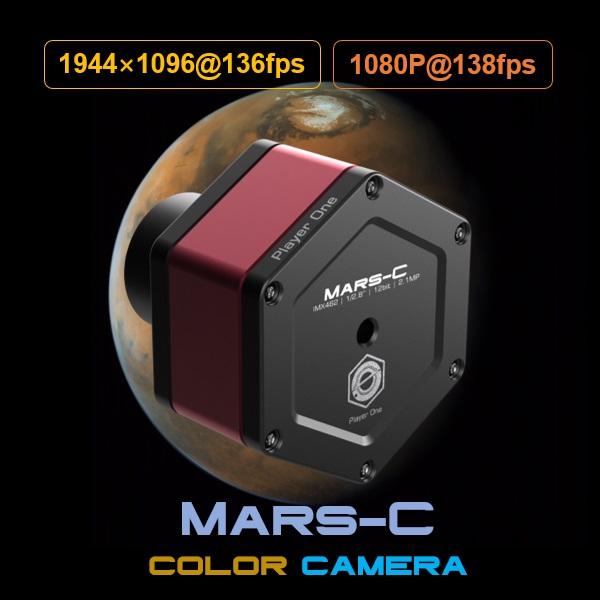
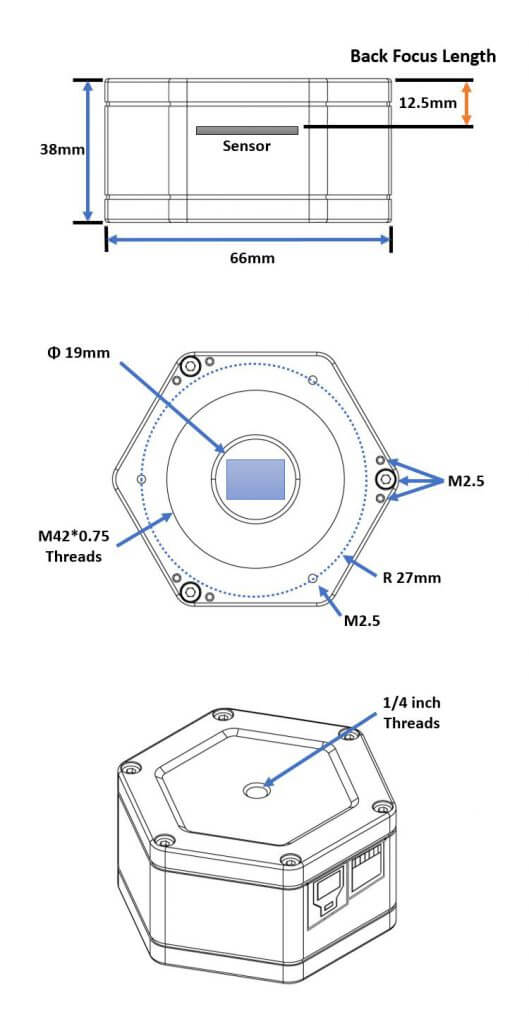
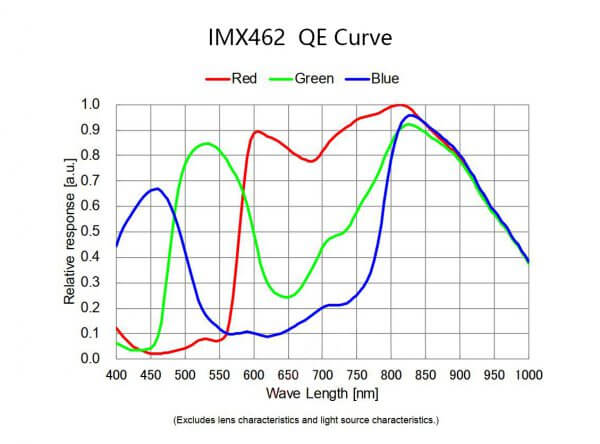
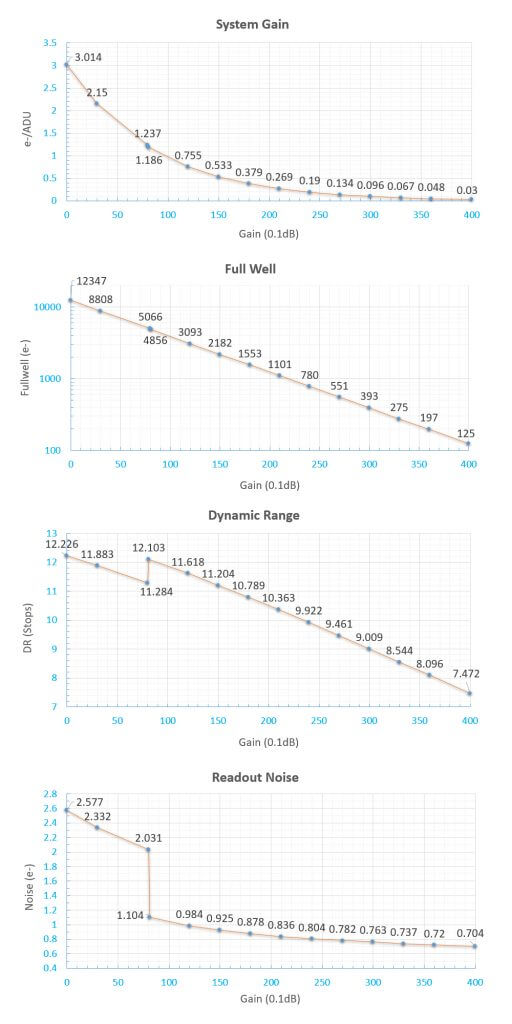
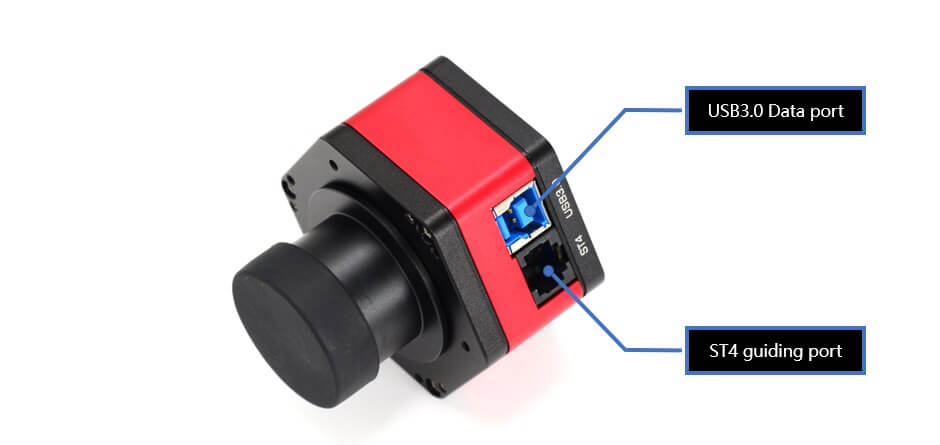
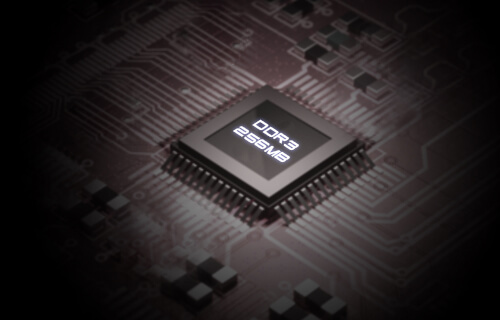
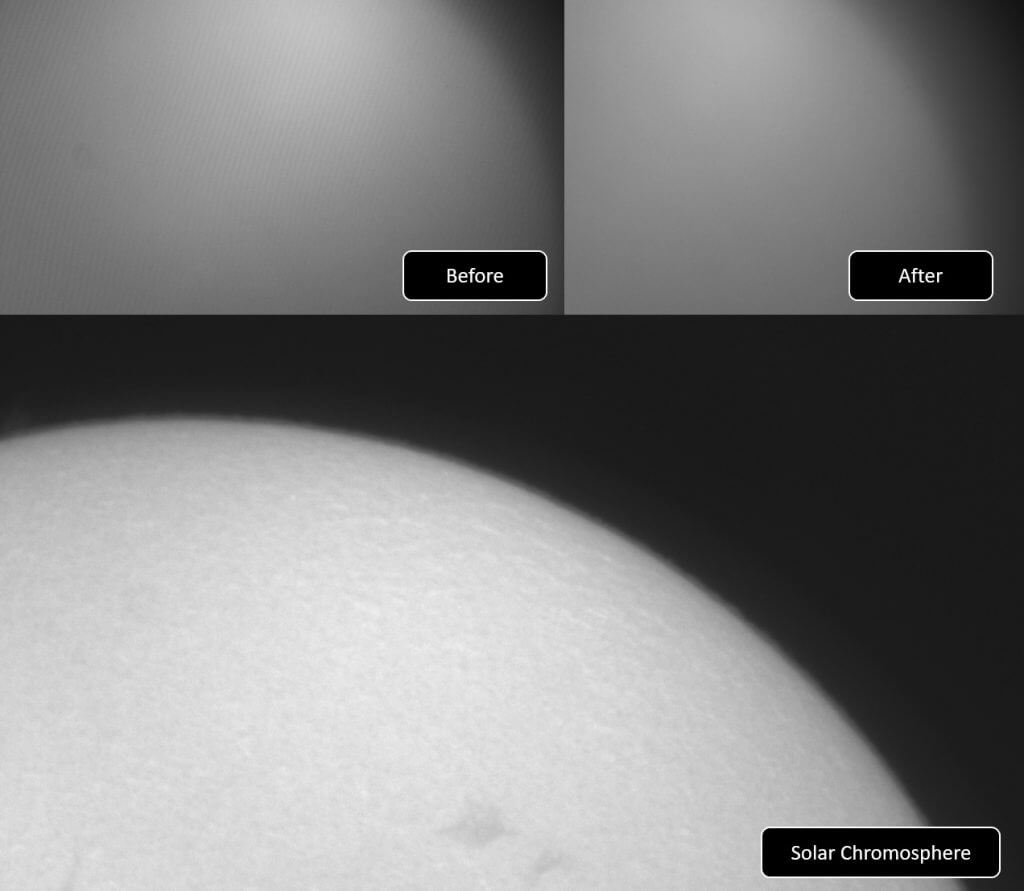
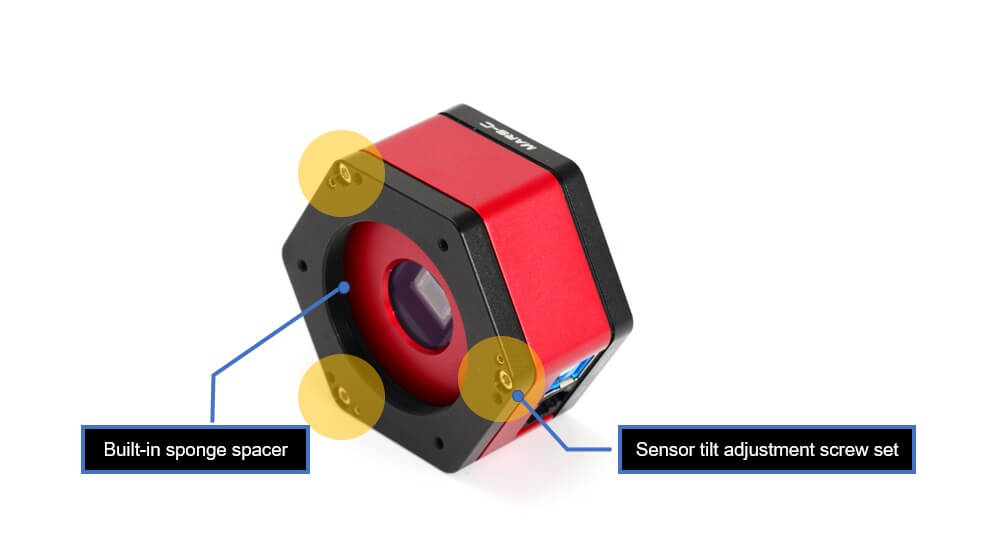
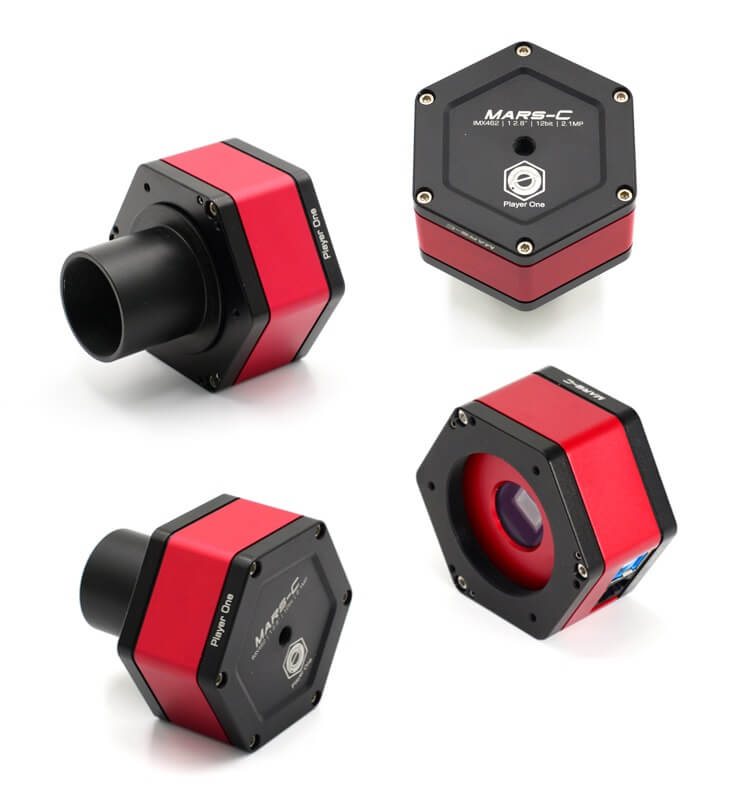
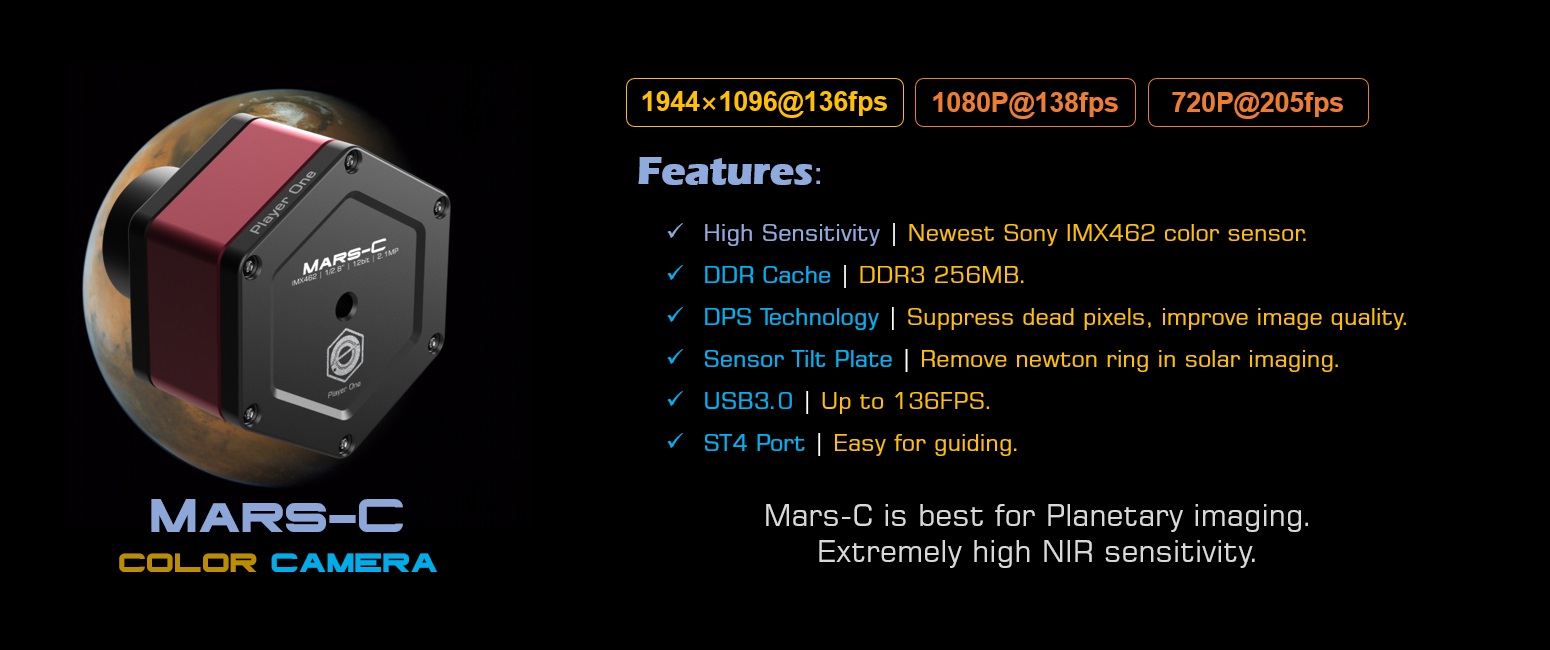
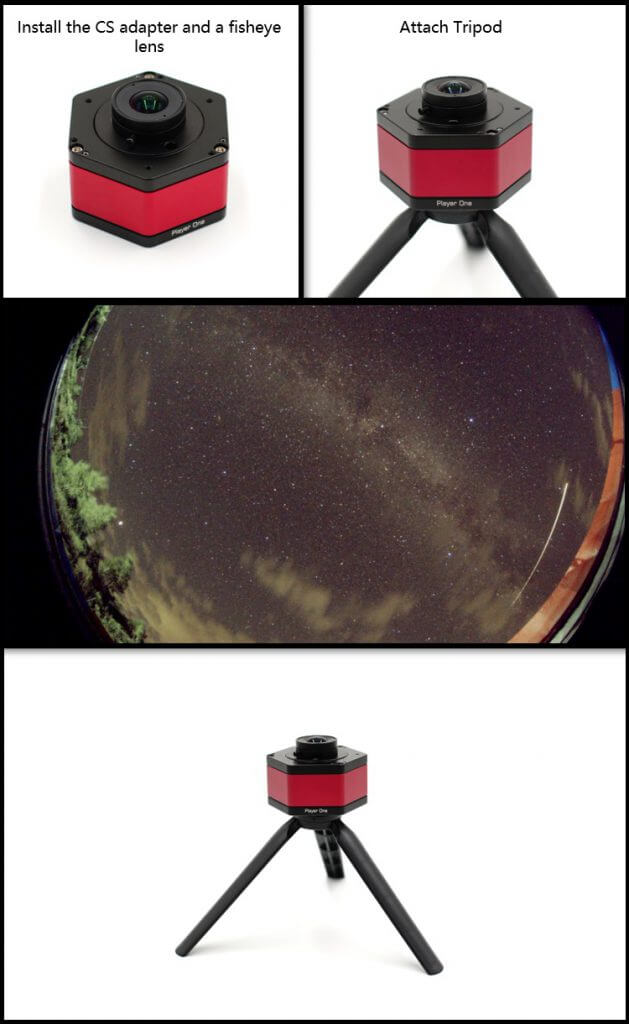
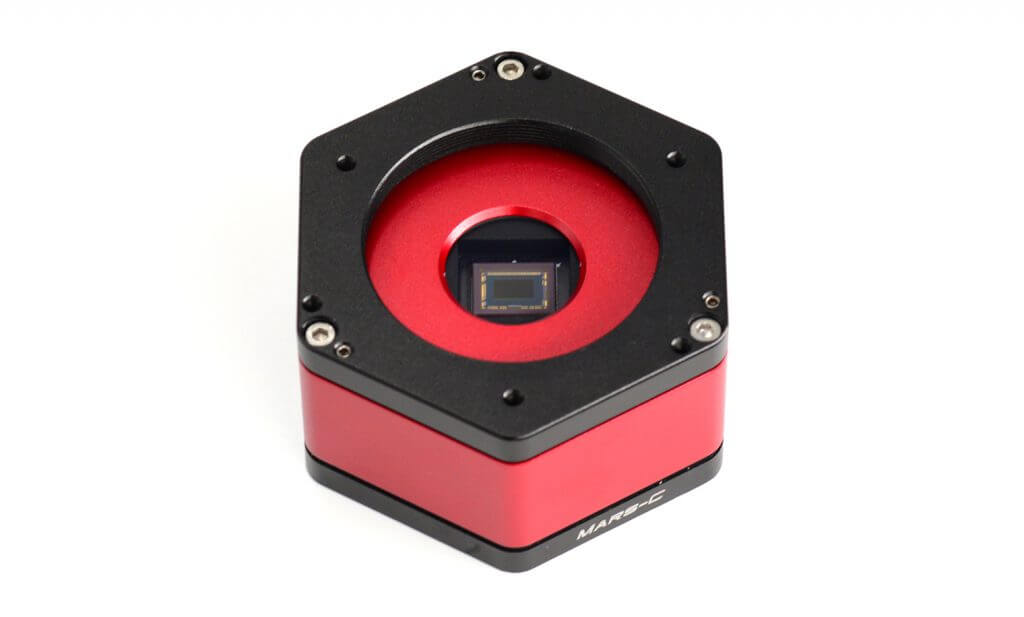
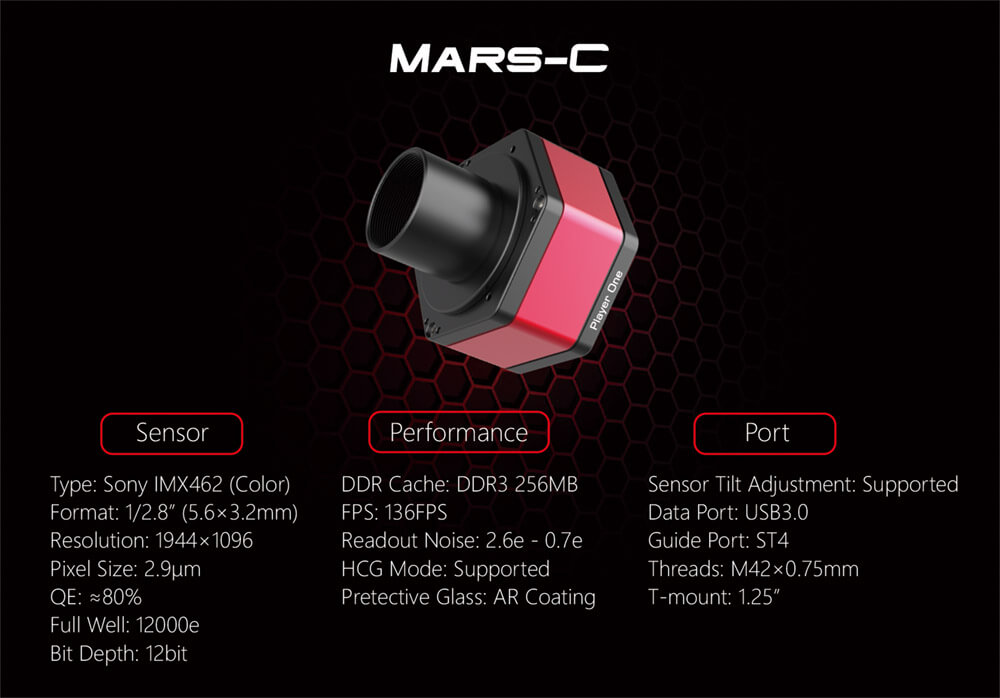
in-box.jpg.77ccd84ffc2090fdb36a78dc4a65ea3a.jpg)
